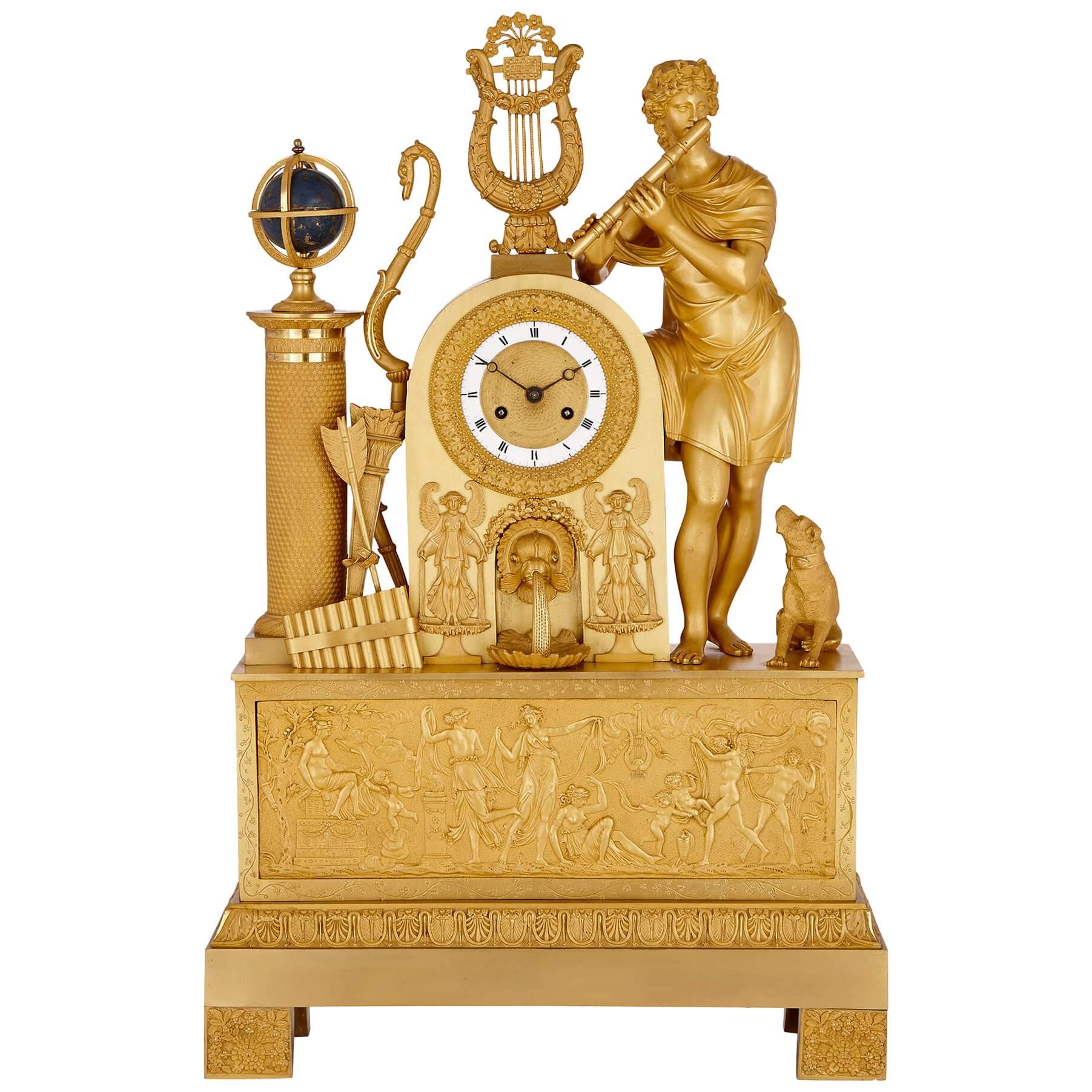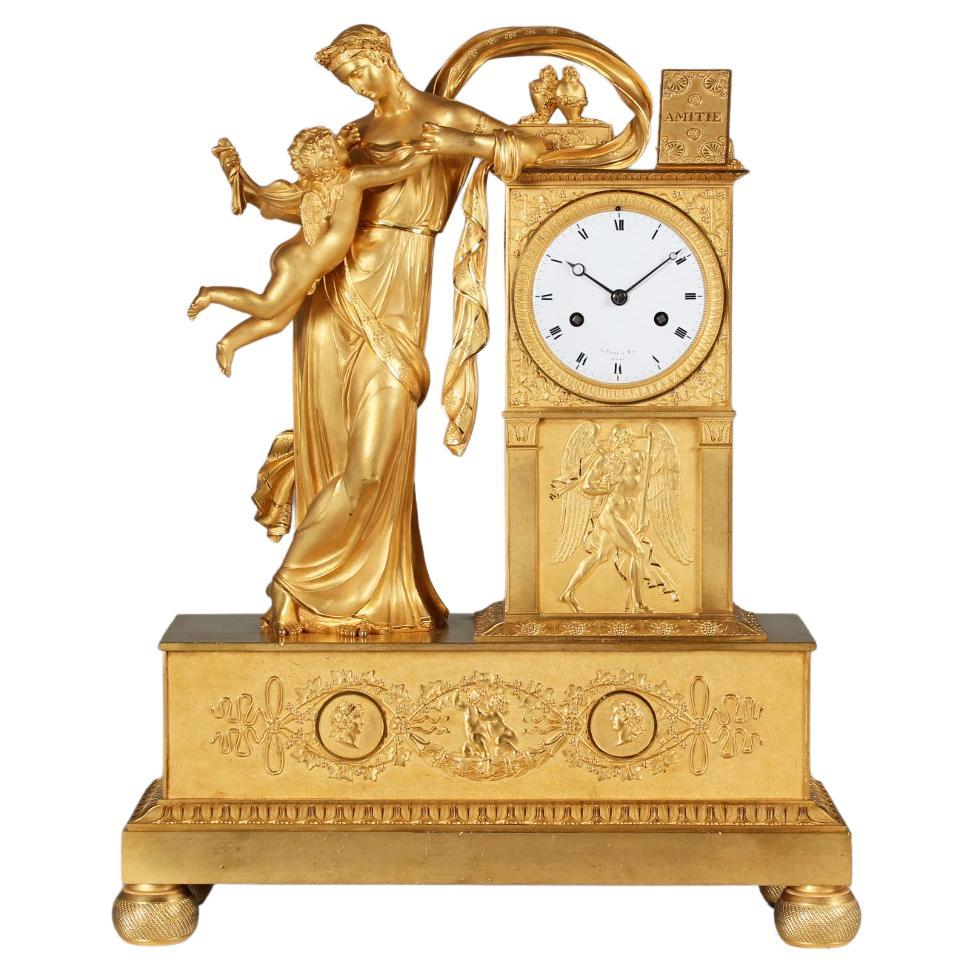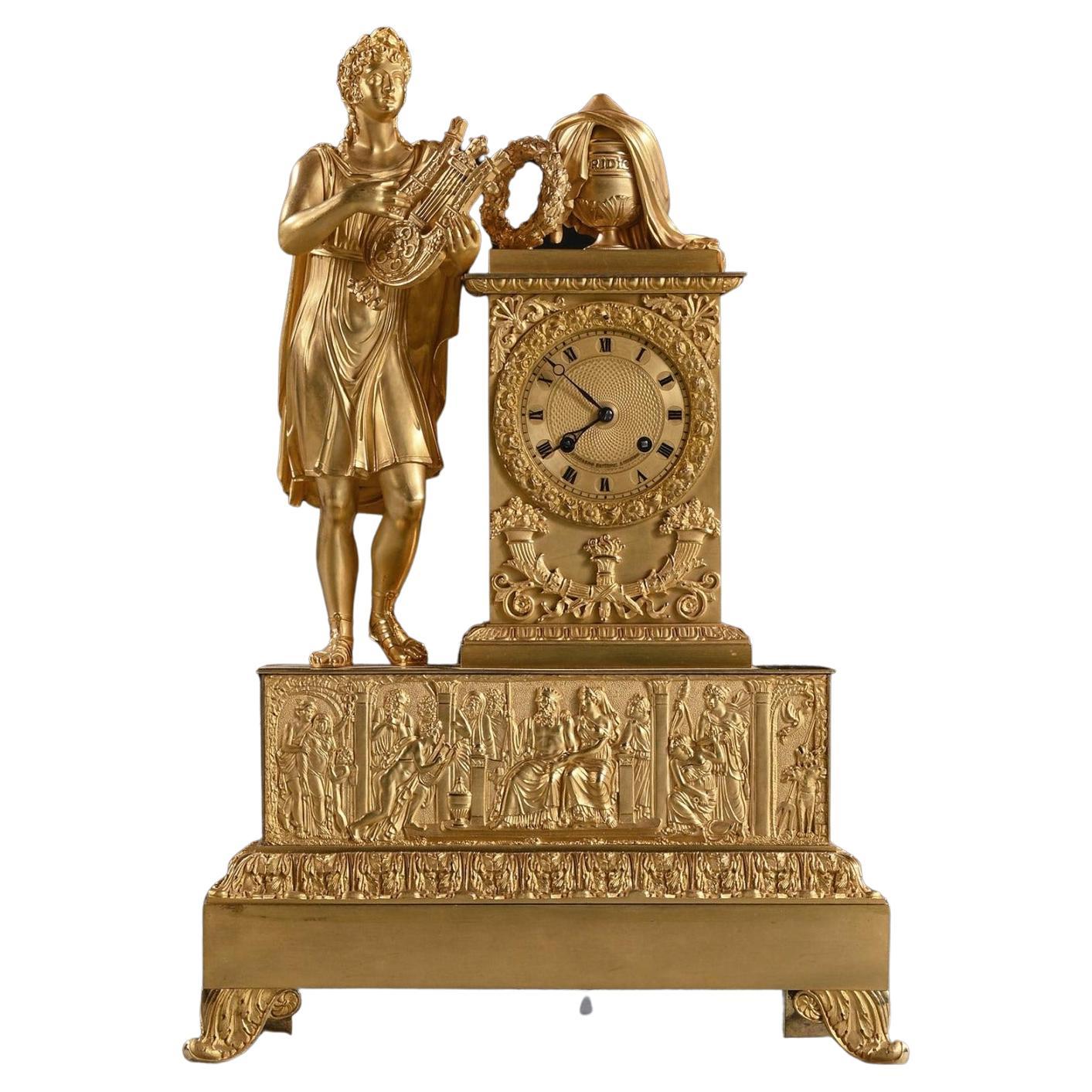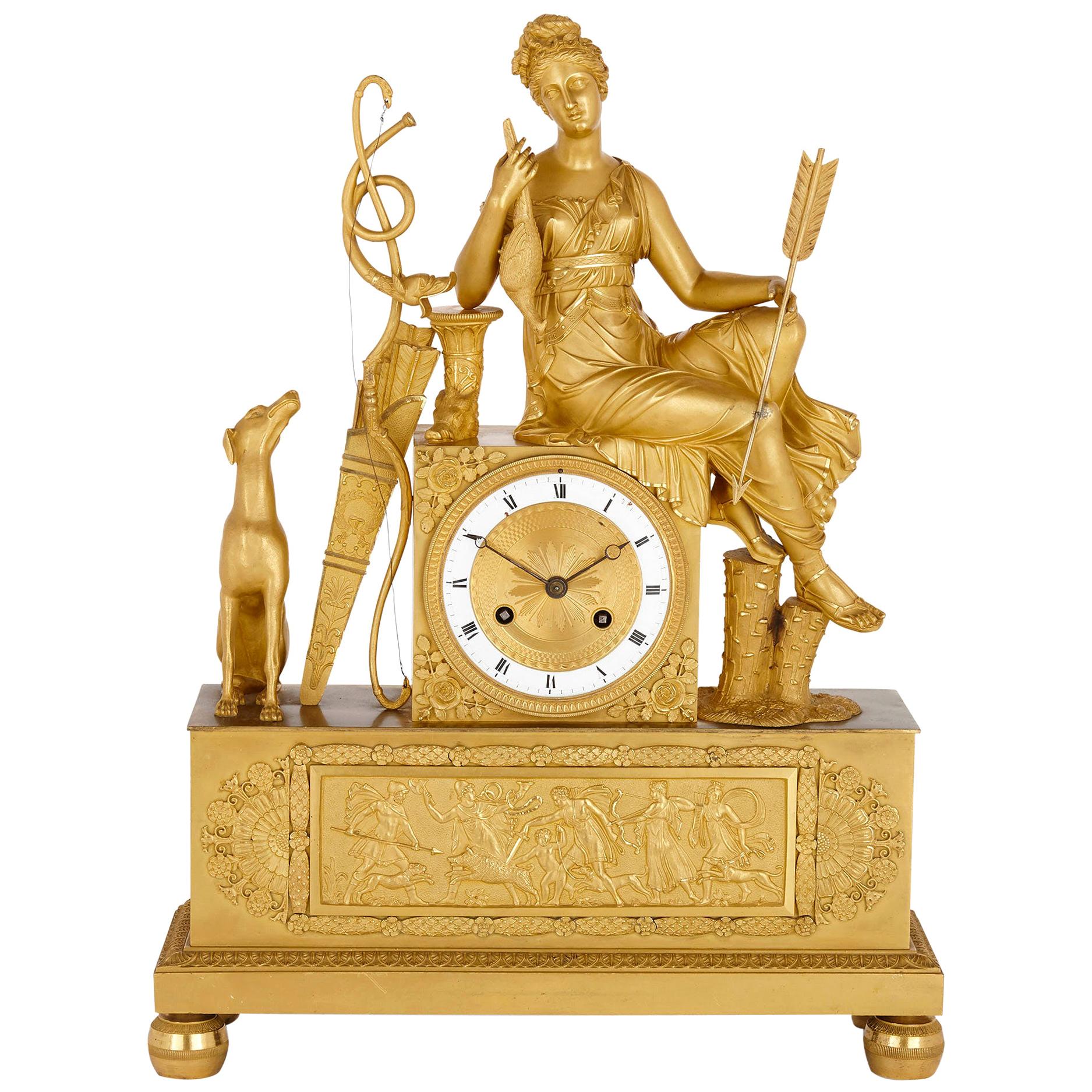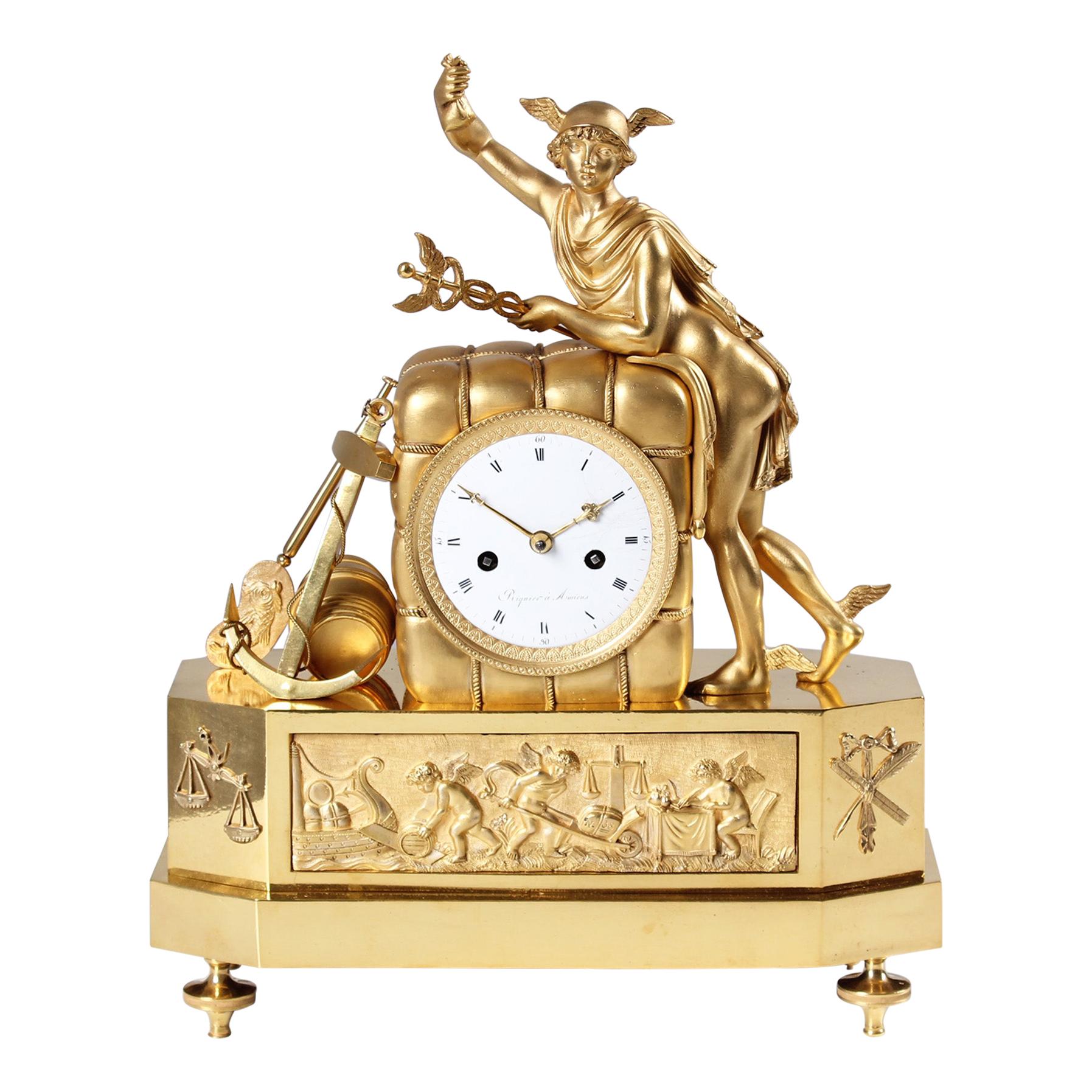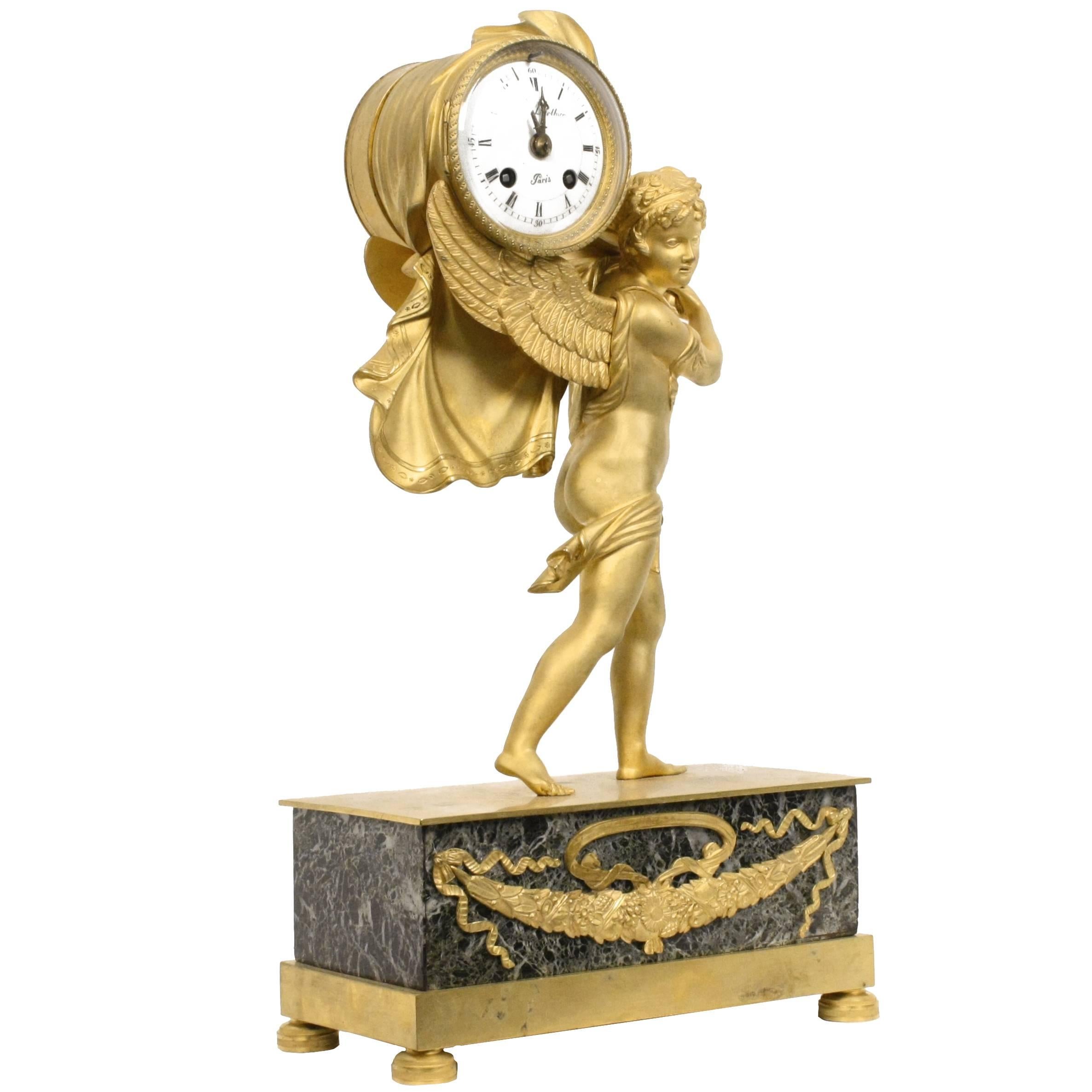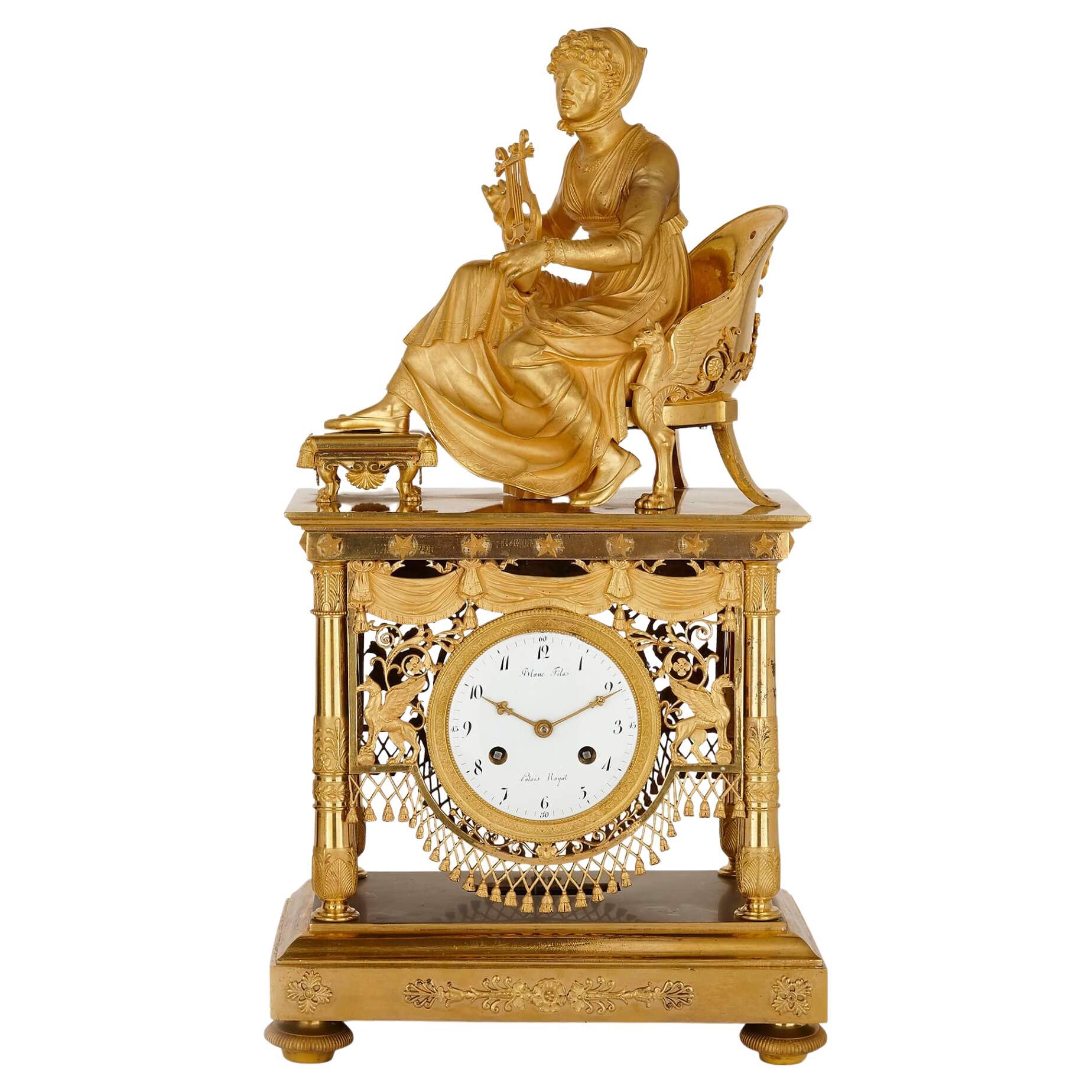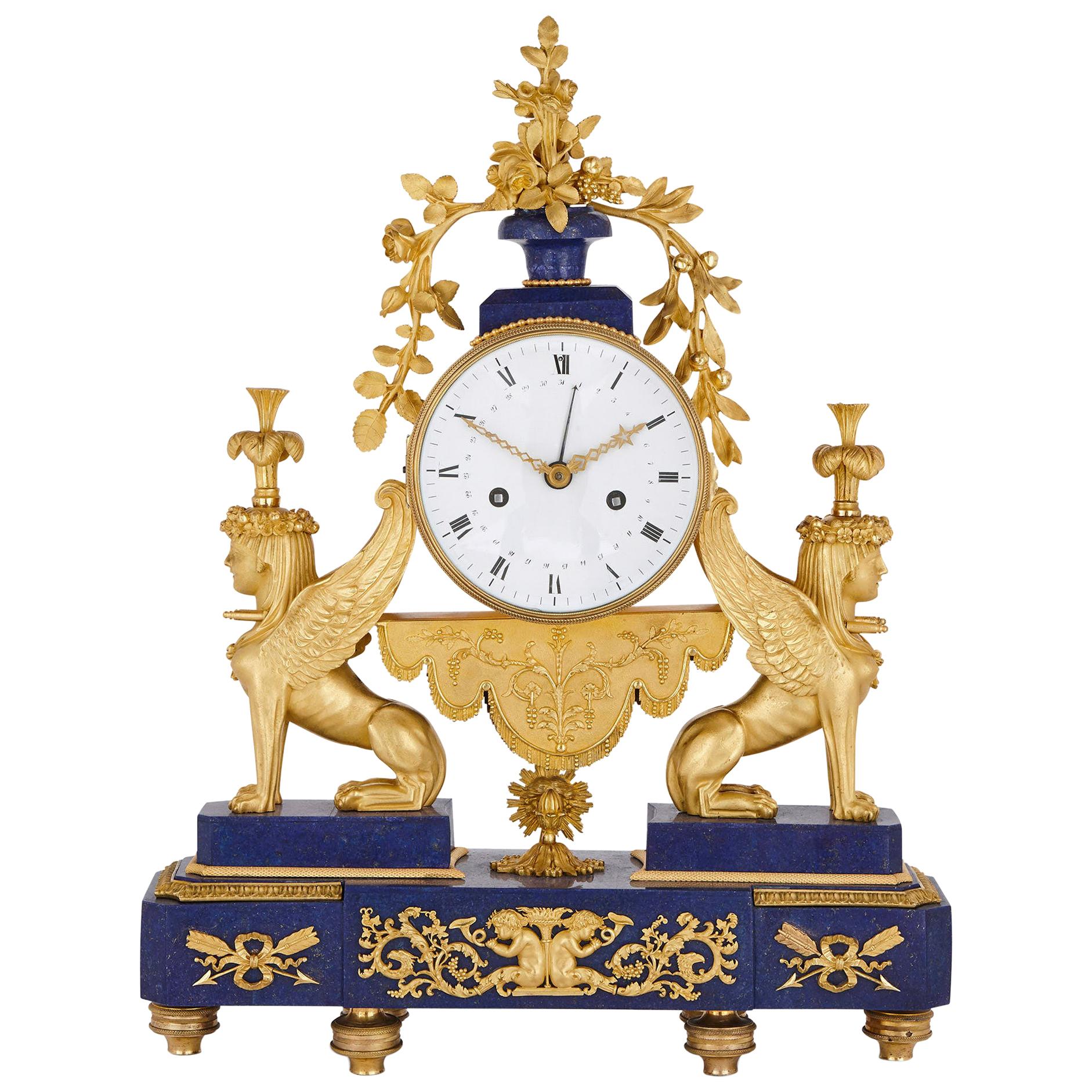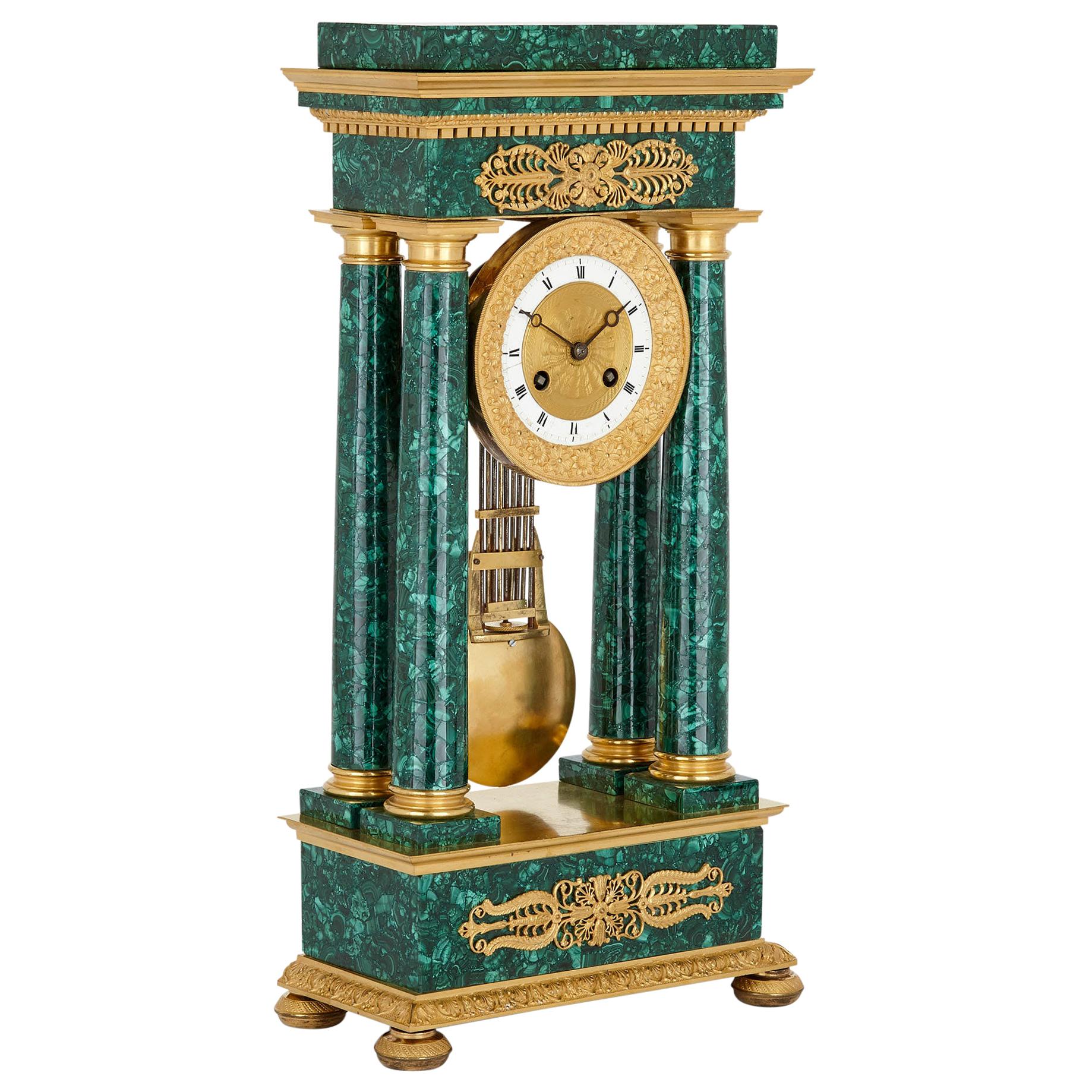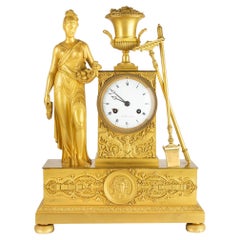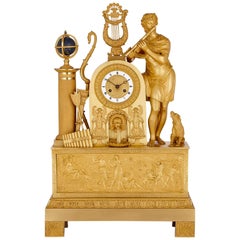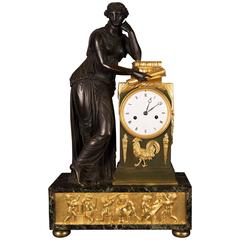
Mantel Clock Bronze Empire Period Representing the Figure of Study, circa 1815
View Similar Items
1 of 10
Mantel Clock Bronze Empire Period Representing the Figure of Study, circa 1815
About the Item
- Creator:Lefevre (Clockmaker)
- Dimensions:Height: 27.17 in (69 cm)Width: 16.54 in (42 cm)Depth: 7.29 in (18.5 cm)
- Style:Empire (Of the Period)
- Materials and Techniques:
- Place of Origin:
- Period:
- Date of Manufacture:circa 1815
- Condition:Wear consistent with age and use. The enamel dial has some thin lines of wear. The clockwork has to be cleaned and checked by a clockmaker at an additional cost. We can arrange this for you and give you a price quote in advance.
- Seller Location:Dilsen-Stokkem, BE
- Reference Number:1stDibs: LU195037477323
You May Also Like
- French Empire Period Ormolu Bronze Mantel Clock of Ceres, circa 1815Located in Shippensburg, PAEMPIRE ORMOLU BRONZE FIGURAL MANTEL CLOCK OF CERES, GODDESS OF AGRICULTURE Movement by Etienne Tavernier; France, circa 1815 Item # 104HWG22Z A fine Empire period mantel clock with bun feet raising a rectangular base with a central portrait of Bacchus flanked by exquisitely chiseled motif of swirling foliage surmounted by a figure of the goddess Ceres grasping in her lowered hand a wreath woven with foliage and berries while in her garment she collects a bountiful harvest; she rests beside the clock tower with a framed lens opening to access the white enamel dial with black Roman numerals inscribed Etn. Tavernier set with Breguet style hands, raising an urn filled with fruits of the soil; against the tower rest the implements of labor, a shovel and flat rake. The movement is engraved "B". A significant clock movement maker, Etienne Tavernier (French, 1756-1839) is listed in Tardy's horology reference as working closely with the house of Abraham-Louis Breguet as well as providing clock movements...Category
Antique 19th Century French Empire Mantel Clocks
MaterialsBronze, Ormolu
- Empire Period Gilt Bronze Mantel ClockLocated in London, GBThis truly stunning French mantel clock was crafted during the Empire period, and reflects the Neoclassical interests of the Emperor Napoleon I, whose influence over the decorative arts contributed toward a profound revival of beauties of the ancient empires. The mantel clock is crafted entirely in gilt bronze, and features a stepped base on four block feet. The base depicts a Classical relief panel to the front, showing female dancing figures and putti, as well as musical instruments. Surmounting the base is an arch featuring a central mask fountain and basin...Category
Antique Early 19th Century French Empire Mantel Clocks
MaterialsOrmolu, Bronze
- French Empire Ormulu Bronze Mantel Clock, Lepaute, Thomire, Paris, circa 1815Located in Greven, DEOrmulu pendule with depiction of friendship and love Paris (Lepaute, Thomire) fire-gilt bronze Empire around 1815 Dimensions: H x W x D: 44 x 36 x 13 cm French pendulum movement with eight days duration. Thread suspension and lock disc striking movement with strike on bell on the half and full hour. White enamel dial with Roman hour numerals and Breguet hands. Signature: LePaute & Fils / Hrl. du Roi (Pierre-Basile Lepaute (1750 - 1843) with his son Pierre-Michel Lepaute (1785-1849); from 1811 in joint workshop). Description: The extremely high quality pendulum shown here takes up a profound theme: Friendship, which combines with love and can thereby outlast time and death. As it is typical for the epoch of classicism, personifications and symbols are taken from the fund of ancient mythology and art and then developed further. The main figure is a young woman in an antique, girded garment, standing barefoot and with crossed legs next to an altar, on which she is leaning with her left elbow. She gracefully bows her head towards a tempestuously approaching Cupid, grasps his right hand with her left and draws him to her bosom, the seat of the heart. The delicate ambivalence of flying towards and being held culminates in the trustingly intimate look that the two cast at each other. The young woman personifies friendship, the winged Cupid love. As a sign of their intimate connection, two burning hearts appear on the altar next to the two, framed by the puffed scarf, which are closely bound together by a chain of flowers. Next to them, on the altar slab, one can see an erected book with the title "Amitie" (French: amitie, friendship). Supporting the book is a pomegranate held by a ring of pomegranate flowers. The bursting seeds spill out of the cracked skin. Since ancient times, the pomegranate and its blossoms have been dedicated to the goddess Persephone, symbolizing the underworld and death, but also life and fertility. The myrtle interwoven in the pomegranate flower wreath of "friendship" also has a far-reaching symbolic power: the plant was dedicated to the goddess Aphrodite, stands for virginity, and was and is therefore obligatory in the bridal wreath...Category
Antique Early 19th Century French Empire Mantel Clocks
MaterialsBronze, Enamel
- Large French Empire Period Gilt Bronze Figural Mantel Clock of Exceptional QualiLocated in Benington, HertsA large and impressive French Empire period gilt bronze mantel clock of exceptional quality and colour. French (possibly retailed in Italy) - Circa 1820. The finely chased and original gilt bronze case depicting Orpheus playing his lyre with an eight-day bell striking movement, outside countwheel, backplate initialled and numbered 'A C D 1516’. The dial with Roman numerals and inscribed Riccardo Pacinoti of Lavourne. It is a French movement (silk suspension) striking the hour and half hour. The case in the form of an oblong pillar cast with anthemium and cornucopia beneath a draped urn and a laurel wreath, flanked by the figure of Orpheus playing his lyre, the stepped plinth cast with wonderfully detailed underworld scenes, on leaf scroll feet. In excellent condition the clock case has been cleaned with the movement completely overhauled and serviced to the highest standard by a specialist restorer. In general 19th century French bronze clocks...Category
Antique 1820s French Empire Mantel Clocks
MaterialsBronze
- Empire Period Gilt Bronze Figurative Mantel ClockLocated in London, GBEmpire period gilt bronze figurative mantel clock French, early 19th century Measures: Height 33cm, width 31cm, depth 12cm This superb mantel clock is a wonderful example of the...Category
Antique Early 19th Century French Empire Mantel Clocks
MaterialsOrmolu, Bronze
- French Empire Period Gilt Bronze Mantel ClockLocated in London, GBFrench Empire period gilt bronze mantel clock French, early 19th century Measures: Height 50cm, width 36cm, depth 12cm This mantel clock, wrought from gilt bronze during the French Empire period, features a rectangular base, set above four bun feet, the front of the base adorned with a gilt bronze relief panel...Category
Antique Early 19th Century French Empire Mantel Clocks
MaterialsBronze, Ormolu

